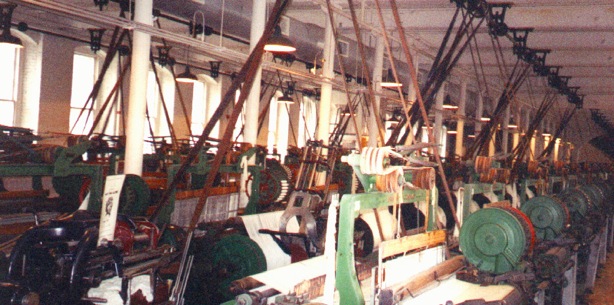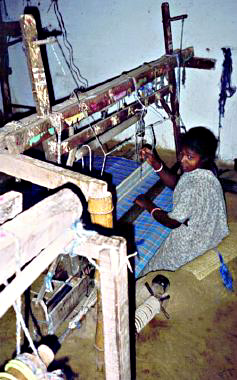

Indian woman in Madras, weaving at a hand loom, 1992.
The Textile Revolution
What is the difference among: data, information, & knowledge with respect to machinery and the rapid transformation of the textile industry?
Pursell argues | Visual evidence | Postman's data | Pacey's knowledge and diagnostic interpretation | An informed observer
"Europe...he discovered filled with 'information' he had not previously been aware of."
Pursell refers to the discoveries of landscape scholar, John B. Jackson.
"As material manifestations of social relations, tools are concrete commitments to certain ways of doing things and therefore certain ways of dividing power. It is a mistake to think..."
Pursell, p. 218
Indian woman in Madras, weaving at a hand loom.
Fabric produced by child labor worldwide ends up as a source of material for the fashion industry.
Cheap clothing, once produced in the US is now made overseas even more inexpensively.
Three aspects of textiles
1. Mechanization in the textile industry in the 1760s to the 1850s made apparel affordable to a mass market.
2. Technical applications of clock components to power looms and the need for control devices in power looms were one source of automation: the computer punch card for example was first use to define a weaving pattern on the power loom in the 18th century.
3. Weaving provided a rich metaphor in our language based on the influence of technology:
warp and woof
Slavery and the issue of Union in the 1850s was "tearing the fabric of society" just before the civil war.
Technology and power
Orientalism and Modernism as Euro-centric redefinition of power relationships over the rest of the world.
This term means that–non-Europeans, by implication are deficient peoples, in part, because they lack technical know-how. This of course is an inaccurate reading of the history of technology.
"The Other is always a cultural construction, something we have imagined to better define ourselves."
Pursell, p. 219.
Vocabulary of key terms:
 |
||
|---|---|---|
| Tools of Toil: what to read. | ||
| Tools are historical building blocks of technology. | ||